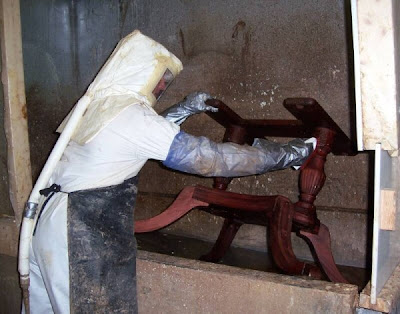Hiring a company to refinish, restore or modify existing
church pews is likely a once in a lifetime experience for those tasked with the
assignment.
In the course of the nearly 30 years of talking with church
business administrators, priests, pastors, lay committee members or volunteers,
there’s one story that often comes up.
“We called the local furniture stripper and when we talked
to them about our pews- we got worried- so we kept looking.”
Those were the lucky ones.
I've heard many horror stories about the difficulties encountered
when a church would mistakenly contract with a well-intentioned local who has
never taken on a pew project before. Most of the time they find that the local
furniture shop is unsure about how they would go about doing the work or how
long it would take. This tends to create a lack of faith in their ability to
execute the project in a timely and professional fashion.
And rightly so.
Furniture “stripping and refinishing” is a completely different
trade. The equipment, process, scale and sequence of execution of their local
furniture work is designed around dressers, wardrobes, tables, chairs and
treadle sewing machines. The average church pew doesn't fit in the dip tanks
they soak furniture in or on the “flow over” tables they use to strip finish.
(And THAT harsh process is tremendously damaging to old wood- even solid
wood). The awkwardness of the church pew
size leaves them cussing and cursing as they attempt to handle the sometimes
very heavy load. Most use high pressure water to blast off paste style
strippers making quite a mess when the confines of their small booths are
extended.
Furniture refinishers also don’t have an idea of the scale
of the project. Thus they tend to price church pew refinishing/restoration in
the same manner as they would furniture. They have no sense of an efficient
process or sequence choosing to piecemeal the work over a long duration of
time. Often they wildly overbid the work or, worse, underbid. Nothing is worse
than a person who is working on your church pew project who about halfway
through realizes he isn’t going to make any money. The quality takes a dive as
he rushes to find a way to seek more payment. Then local politics enters and
you have a mental mess that needs to be managed.
Also, furniture isn’t a church pew. Most furniture won’t be
subject to the rough wear a church pew gets over many years. Thus the finishes
tend to be sprayed on and surface oriented and are easily rubbed off the pew top
rails and ends. I’ve written specifications for work on public projects
(courthouses, state capitals, etc) and the “hand touch” areas of public
buildings (ie stairway handrails) always require special treatment that is
compatible with hand wear. There is no “lifetime guaranteed” surface finish
that actually will last a lifetime. Best recent reference is the “baked on
polyurethane” finishes of the 1970’s. Most strippers have a very difficult time
removing them but hand rubbing on the top rails? The finish disappears. Hand
oils are potent! It’s also why simply re-coating pews with a cleaning and light
sanding deteriorates in just a few years. There’s a layer of grease on the seats and top rails that has to be cleaned out for subsequent new finishes to properly adhere. A mere topcoat over that unstable substrate is more likely to
stick to YOU then the wood below. It’s particularly noticeable on the hot
summer days when you have to peel yourself up off a “re-coated” (some call it “refinished”)
pew at the end of a service.
Even the sanding and staining steps differ for furniture shops.
The damage the harsh processes cause often require an inordinate amount of
sanding- rough, medium, fine, superfine- to restore a smooth feel. Then they
almost always “paint” on a highly opaque stain to even further cover the damage
up. The result is a two dimensional flat aesthetic that looks “stripped and
refinished” and not even “like new” as they promote. Wood should always have a
rich, warm and resonant look. The grain- particularly in a church- should not
be covered over by thick finish. The intimate tactile aspects of wood help to
remind us of the power of the Lord. (I know- that's a bit heavy...)
If you want your church pew refinishing/restoration project
to be done well in a timely and professional manner- it’s important you
contract with a company who has done this many, many times before.
That, we hope, would be us! God bless you! Call anytime.
262.527.8969

